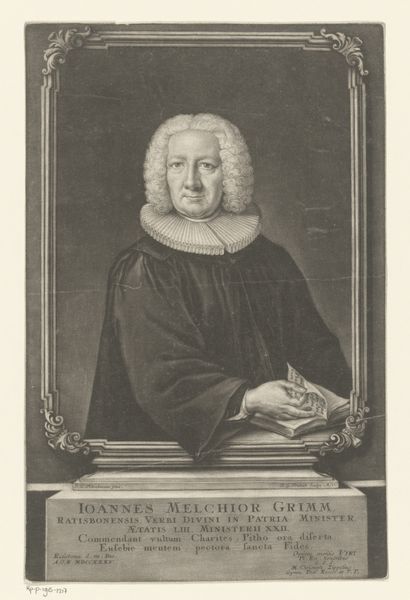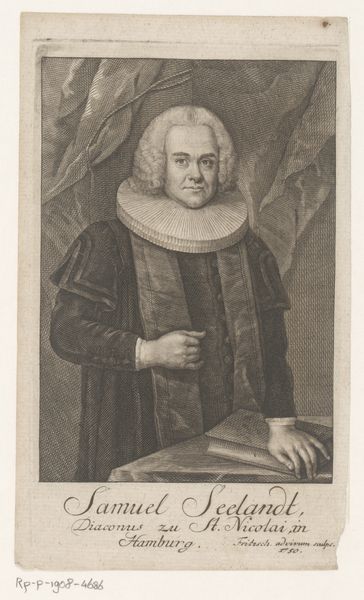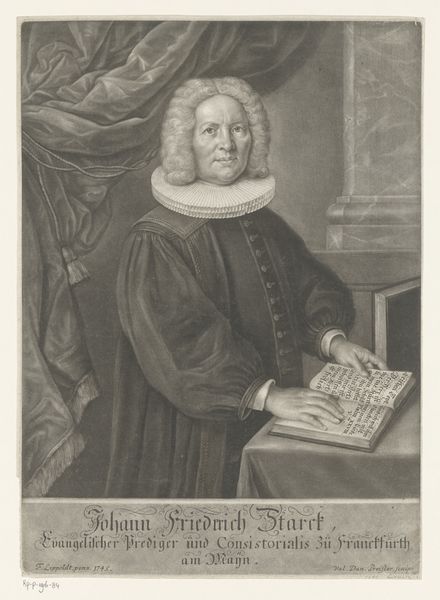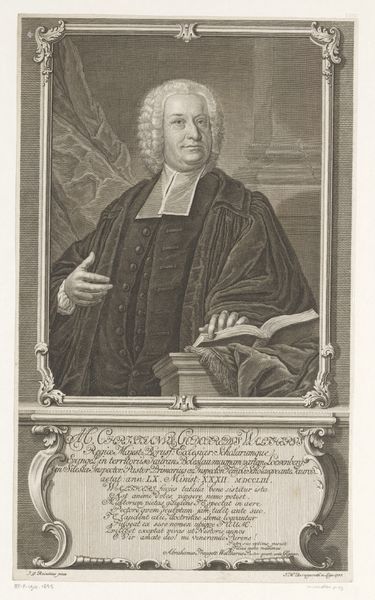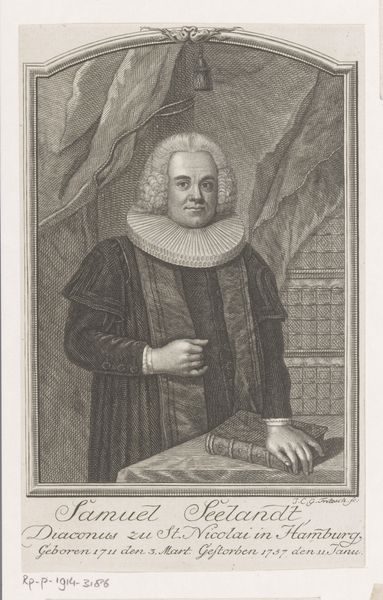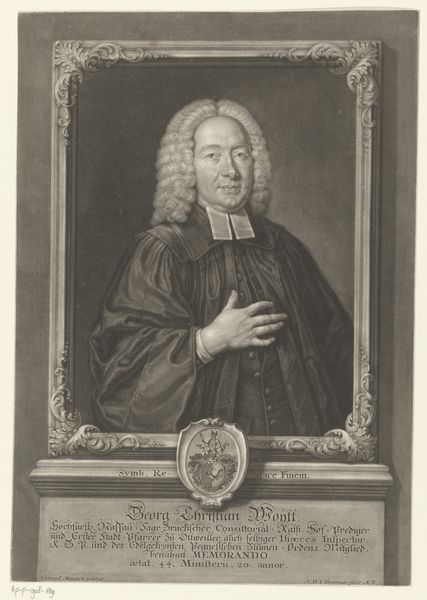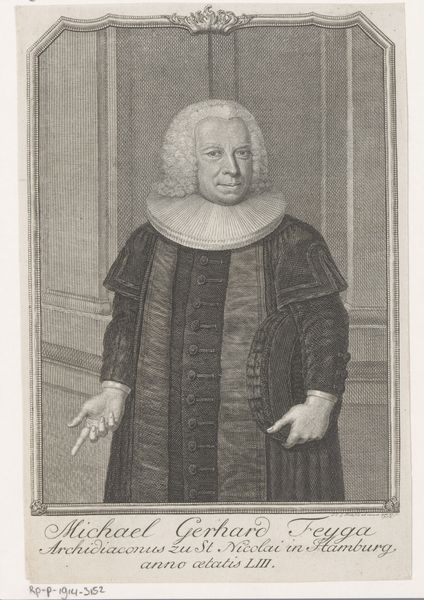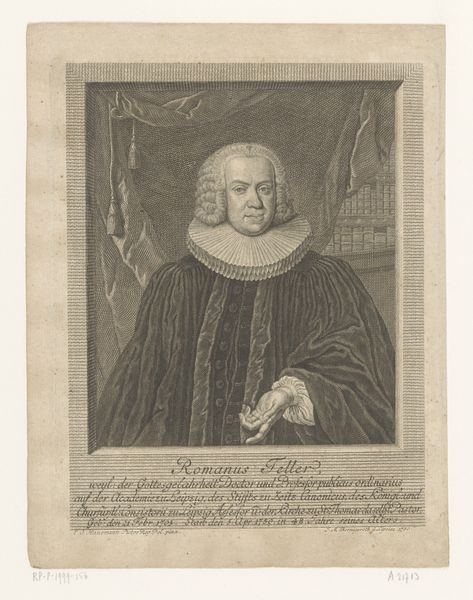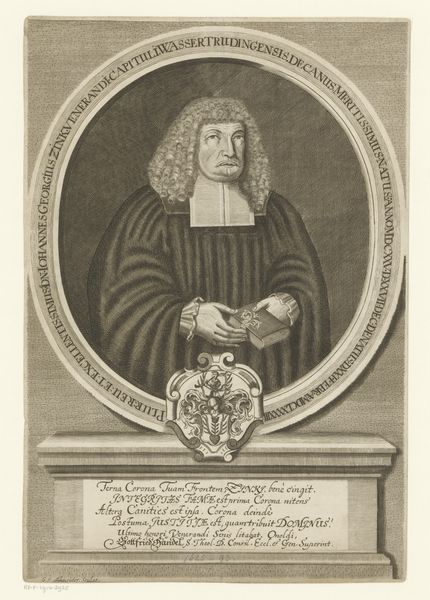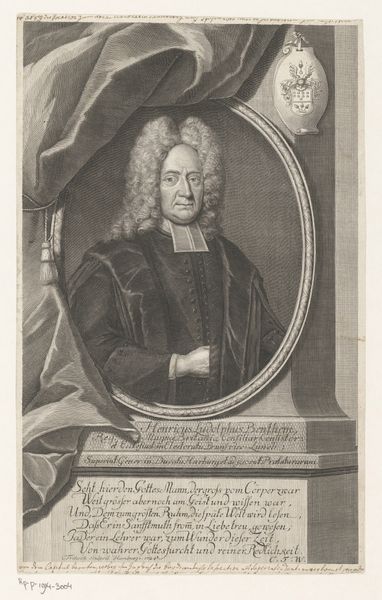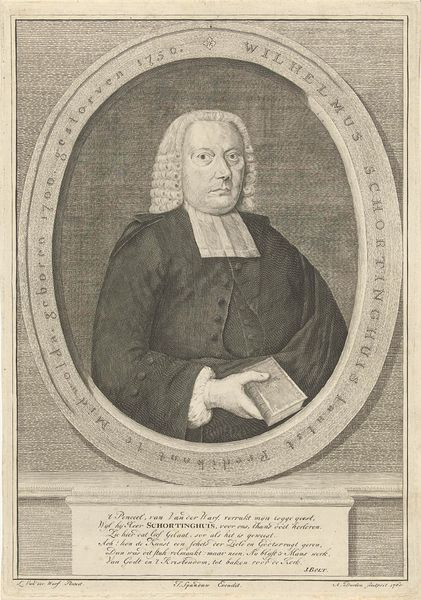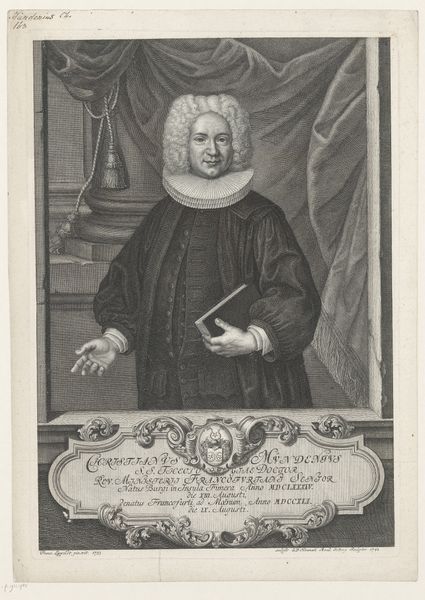
print, engraving
#
portrait
#
baroque
# print
#
old engraving style
#
history-painting
#
engraving
Dimensions: height 314 mm, width 208 mm
Copyright: Rijks Museum: Open Domain
Curator: Looking at this engraving, "Portret van Johann Christoph Neumeister" created by Moritz Bodenehr between 1746 and 1748, now housed at the Rijksmuseum. It strikes me how effectively the artist has utilized the print medium to capture Neumeister's likeness. Editor: Yes, and immediately, the eye is drawn to the contrasting textures. There's the velvety darkness of the robe, set against the crisp white wig and the delicate fringing on the table covering. How was the velvety appearance achieved, with those linear tools? Curator: By focusing on the production method we can observe how Bodenehr manipulated the engraving tools to achieve tonal variety. Note the density of the engraved lines used to convey shadows. This level of craft highlights printmaking’s move towards complex representations of fabric and texture, pushing it from simple reproduction towards fine art object. Editor: Agreed. Consider also, the socio-political element. Neumeister was a prominent pastor, and the Baroque style suggests power and formality. These portraits played a crucial role in constructing public figures during that era. The selection of materials speaks to societal status, highlighting wealth. Curator: Exactly! The social context very much informed the choice to portray him with a book, possibly indicating piety and intellectual depth expected of religious leaders during the period. Editor: Moreover, placement within the Rijksmuseum influences our contemporary reception. Once commissioned for distribution among Neumeister’s circle, the engraving has evolved in significance by taking on value in a collection of cultural heritage. We now assess its craftsmanship within an established institutional setting. Curator: Yes, its journey highlights how meaning is layered, as both an artifact made through considerable skill, and a figure preserved in public memory. Editor: Quite. It leaves you pondering not just Neumeister's identity but also the social and material forces that have brought this small, detailed print into the present day for us to analyze it.
Comments
No comments
Be the first to comment and join the conversation on the ultimate creative platform.
